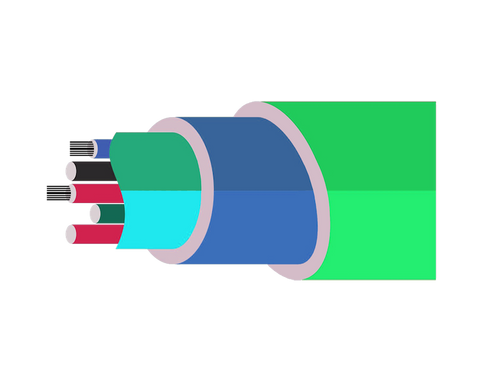Signal Booster News
Software Defined Network (SDN) for Wireless Switching & Routing
May 11, 2016
SDN is used in data centers for internet protocol (IP) routing and switching, and is increasingly being used in carrier networks. To illustrate, imagine you drive a car from A to B, where your car represents an IP packet moving from server A to B. In conventional networks, road signs will tell you where you need to go. In an IP network, routers and switches will direct data packets through the network. The reality is however that the routing tables (road signs) were probably installed many years ago, and have not adapted to the reality that is constantly changing. They...
C-RAN - Centralized vs. Cloud-Based Radio Access Network
May 10, 2016
Acronym C-RAN is actually used for two related, but different concepts: cloud-based radio access network and centralized radio access network. China Mobile started using C-RAN a few years ago, making the technology relatively new. Centralized RAN networks are however already being widely deployed internationally with the aim of operators being to increase their commitment in a maturing market. In conventional distributed cellular networks, equipment at the bottom and top of a cell tower of what we know as a cell site is the RAN. The main component is the base band unit (BBU). This radio equipment links users to the...
Fiber Network Convergence to Deliver Wider Range of Services
May 09, 2016
When a number of services are combined within single access networks, it is referred to as fiber network convergence. This means that multiple or all types of communication services are delivered through a single pipe. A fiber-to-the-home (FTTH) network has for example a wide footprint that is ideal to support fast-growing mobile apps including Centralized-RAN front-haul, WiFi and small cell backhauls, and distributed antenna systems (DAS). Service providers would be able to enter new markets, offer innovative services, adopt new business models and deliver a wider range of services through fiber network convergence. Fiber network convergence is mainly driven by...
Network Functions Virtualization (NFV) for Mobile Carrier Networks
May 06, 2016
NFV is used when applications and services are deployed in a carrier network. Traditionally, network functions such as firewalls, routers, 4G baseband units, deep packet inspection and session border controllers were implemented with dedicated network appliances. Using many appliances has the following disadvantages: Many pieces of equipment need to be maintained. Expensive. Long deployment times. Required upfront capacity difficult to determine. NFV's aim is to solve these challenges by using software to implement network functions and then deploying them on common hardware. This eliminates the requirement for specialized appliances, similar to how smartphones replaced a number of specialized devices including...
Hybrid Fiber Coax (HFC) Cables for Multi-System Operators (MSO)
May 05, 2016
HFC is used by multi-system operators (MSO) and cable operators as a service delivery architecture. It uses coaxial and fiber optic cabling to distribute voice content, data and video to and from the headend and subscribers. Signals are typically sent from the headend via a hub to within a mile of the final destination using a fiber optic cable. For a service area that ranges from 64 homes to 1,000 subscribers, the fiber optic cable is terminated in an HFC node. Optical signals are then converted to radio frequency (RF) signals and transmitted via coaxial cable to subscriber's businesses or...





